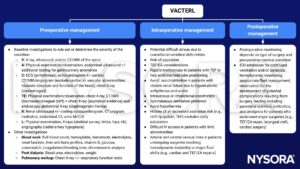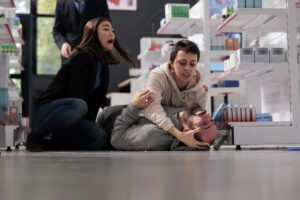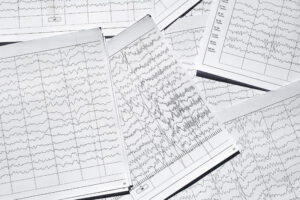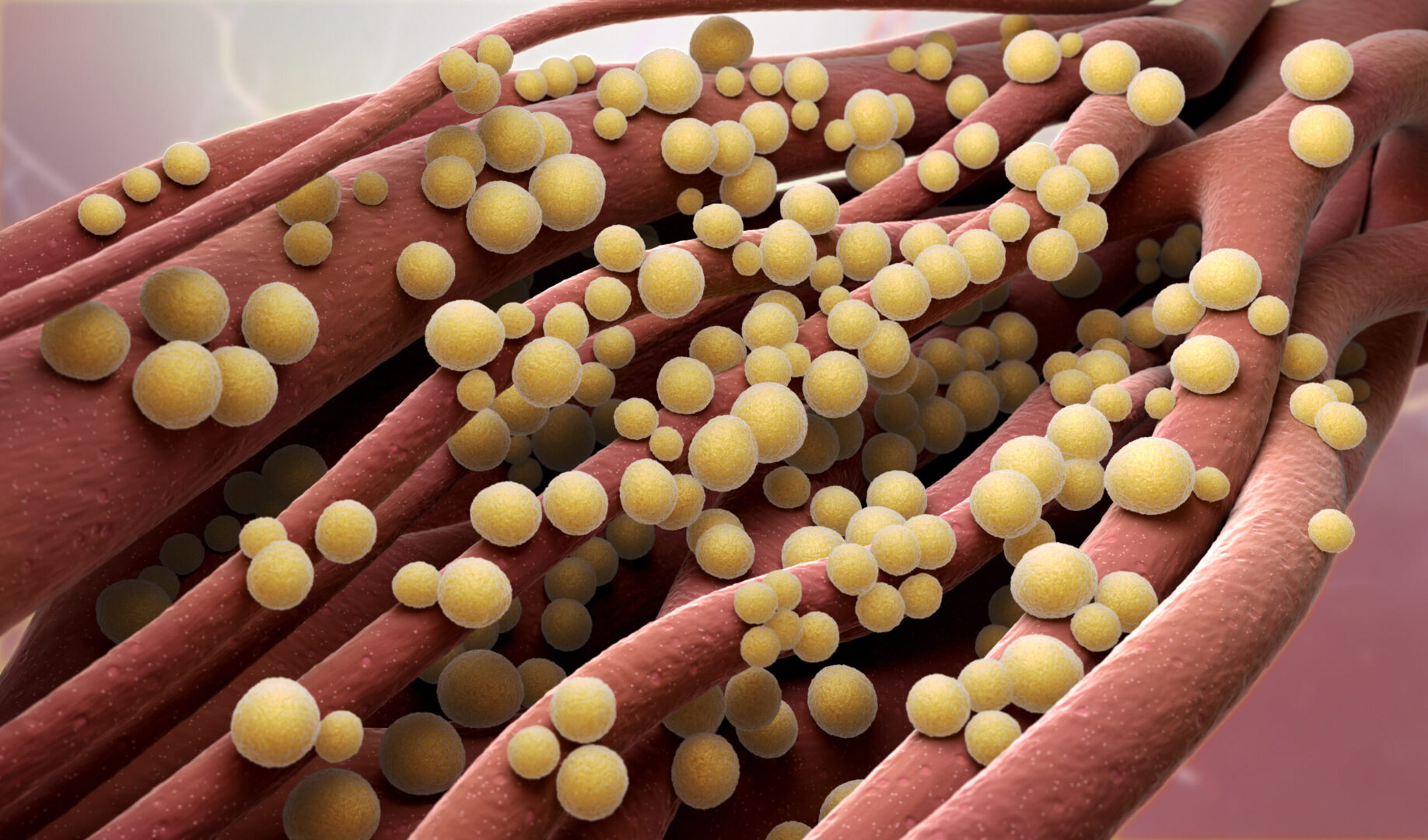Learning objectives
- Define VACTERL
- Anesthetic management of a pediatric patient with VACTERL
Definition and mechanisms
- VACTERL association (VATER association, VACTERL syndrome) refers to a group of congenital defects that tend to co-occur
- V: Vertebral anomalies
- A: Anorectal malformations
- C: Cardiovascular anomalies
- T: Tracheoesophageal fistula (TEF)
- E: Esophageal atresia (EA)
- R: Renal anomalies
- L: Limb defects, including radial anomalies
- Refers to abnormalities in structures derived from the embryonic mesoderm
- Patients may also have other congenital anomalies
- Most patients are developmentally normal and have normal intelligence
Signs and symptoms, and complications
| VACTERL | Congenital malformations |
|---|---|
| V: Vertebral anomalies (70%) | Small hypoplastic, dysplastic, missing, or supernumery vertebrae Hemivertebrae Wedge vertebrae Vertebral clefts and fusion Caudal regression Tethered cord Branchial arch/cleft abnormalities Rib anomalies Sacral agenesis Dysplastic sacral vertebrae Scoliosis or kyphoscoliosis secondary to costovertebral anomalies C5-C6 dislocation and severe stenosis with spinal cord impingement (rare) Single umbilical artery (20%) |
| A: Anorectal malformations (55%, up to 90%) | Anal atresia/imperforate anus |
| C: Cardiovascular anomalies (75%) | Most common defects: Ventricular septal defect, atrial septal defect, tetralogy of Fallot Less common defects: Truncus arteriosus, transposition of great arteries, patent ductus arteriosus, coarctation of aorta |
| T: TEF / E: EA (32%) | TEF EA can occur as an isolated effect (8%) |
| R: Renal anomalies (50-80%) | Urological problems (e.g., severe reflux or obstruction of outflow of urine from both kidneys) Horseshoe kidneys Cystic, aplastic, dysplastic, or ectopic kidneys Hydronephrosis Unilateral/bilateral agenesis Pyelonephritis Nephrolithiasis |
| L: Limb defects, including radial anomalies (up to 70%) | Displaced, absent, or hypoplastic thumbs Polydactyly Syndactyly Radial aplasia, dysplasia, or hypoplasia Radial ray deformities Radioulnar synostosis Club foot Hypoplasia of great toe/tibia Lower limb tibial deformities Bilateral limb defects usually have kidney/urological problems on both sides while unilateral limb defects have kidney/urological problems on the same side |
| Other | Growth deficiencies Failure to thrive |
Diagnosis
- VACTERL association is a diagnosis of exclusion
- Not all malformations are always present
- At least three of the malformations (including TEF) have to be present and there must be no clinical or laboratory-based evidence for the presence of one of the many similar overlapping conditions to make the diagnosis
Treatment
- Surgical correction of the specific congenital anomalies (e.g., TEF, certain types of severe cardiac malformations, and imperforate anus/anal atresia in the immediate postnatal/neonatal period)
- Long-term medical management of sequelae of congenital malformations (e.g., renal and vertebral anomalies)
Management

Suggested reading
- Aycan IO. Turgut H, Yildirim ZB, Kavak GO. Anesthetic management in VACTERL syndrome. J Clin Exp Invest. 2014;5(1):103-105.
We would love to hear from you. If you should detect any errors, email us customerservice@nysora.com







